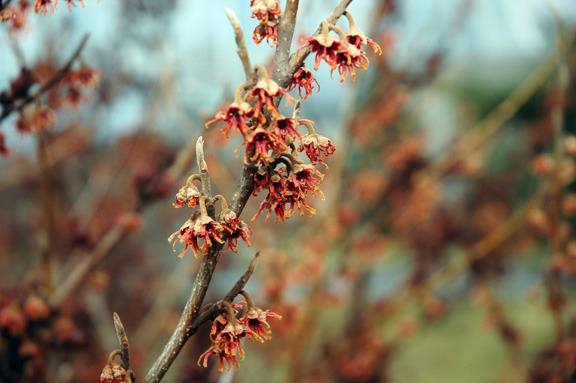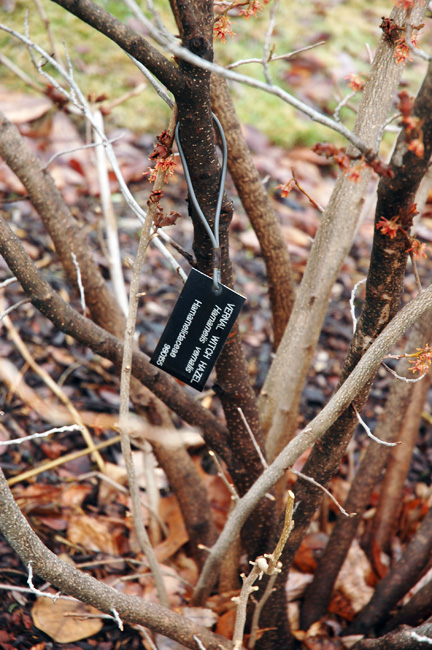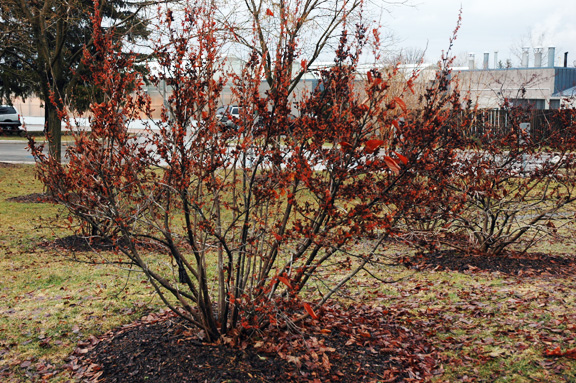| General Description | This deciduous shrub is quite, neat in appearance but variable in form, branches are low and serpentine bending up at their extremities to form a broad rounded outline. This shrub will sucker and form large colonies if not rigorously cultivated.
|
| ID Characteristic | Flowers have a strong odour, with red-purple growth. Flower buds are grouped, tan and pubescent, flowering in late winter.
|
| Shape | Multi stemmed, dense rounded shrub. |
| Landscape | This plant is used for massing or grouping, screening or hedging, it is also used for its early spring colour and for its autumn foliage. |
| Propagation | It is difficult to propagate this shrub. Rooting is easy but over winter survival is very difficult. To ensure survival, induce growth after rooting. The best way to propagate is through semi-hardwood cuttings. |
| Cultivation | Somewhat difficult to transplant, grows admirably in poor drained, clay soils, does well in full sun or partial shade. Adapts to different pH soils.
|
| Pests | Usually no serious pest problems. Oak gulls cause no real concern because most of them are harmless to the tree. Aphids cause stunted growth and produce
honey dew on lower leaves. Leaf miners cause brown areas in leaves. |
| Notable Specimens | The Niagara Parks Botanical Gardens, Niagara Falls, Ontario. |
| Habitat | Found on gravely soils and banks of streams as an understorey shrub. |
| Bark/Stem Description | Gray bark, pubescent young stems.
|
| Flower/Leaf Bud Description | Vegetative, naked, gray-brown, tomentose buds which are 7-14 mm long. Flower is stalked and rounded. Usually, 3-4 per stalk.
|
| Leaf Description | Alternate, simple, obovate, 5-12.5 cm long and half to two ngthird’s as wide. It has a rarely sub cordate base, often unequal; medium to dark green in colour, with 4-6 veins. Petiole is 0.5-1 cm long. |
| Flower Description | It has yellow to red flowers that are long lasting and are 1 cm wide; these flowers have a strong odour and bloom in late winter. Flowers are stalked and usually in clusters of 3–4 per stalk.
|
| Fruit Description | Fruit matures in September, and is a dehiscent capsule which is 1-1.5 cm long, and contains black seeds.
|
| Colour Description | New growth is bronze to red-purple, it is medium to dark green in summer, changing to a nice yellow to golden-yellow in autumn.
|
| Texture Description | Medium in foliage when semi-bare, thick density in foliage when truly bare. |


